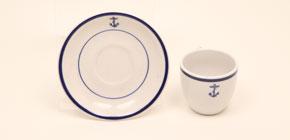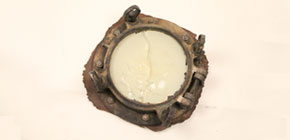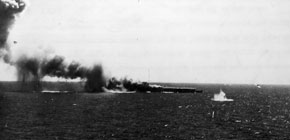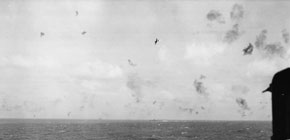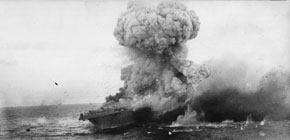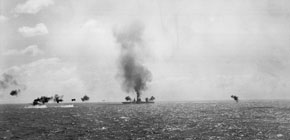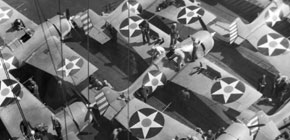
One of the first major intelligence coups the US Navy was able to capitalize on was learning of the Japanese plan to invade Port Moresby, New Guinea and Tulagi in the eastern Solomon Islands.
On 29 April 1942, Admiral Chester Nimitz, commander-in-chief of the US Pacific Fleet, dispatched all four fleet aircraft carriers and their supporting vessels to the South Pacific to oppose the Japanese invasion fleet. Rear Admiral Jack Fletcher's Task Force 17, consisting of the carrier Yorktown, three cruisers and four destroyers and Rear Admiral Aubrey Fitch's Task Force 11, made up of the carrier Lexington and similar supporting vessels, were already in the area. Vice Admiral William Halsey's carriers Enterprise and Hornet of Task Force 16 had just returned to Pearl Harbor from the Doolittle Raid and were now headed for the Coral Sea at flank speed. Fletcher would be in overall command until Halsey arrived, but Halsey's carriers would not arrive in time for the battle.
The Japanese light carrier Shōhō and the fleet carriers Shōkaku and Zuikaku were to provide air cover for the Japanese invasion forces at Tulagi and Port Moresby. Unbeknownst to the Japanese, Fletcher's forces had preceded the arrival of the Japanese in the Coral Sea. The Japanese had assumed US warships would not be in the area until landing operations were well underway. On 4 May, Fletcher's carrier-based aircraft struck the Japanese invasion force anchored off of Tulagi, alerting the Japanese to the US presence and prompting them to actively seek out and destroy the American carriers. On 7 May, both sides located each other's carriers through the use of reconnaissance aircraft and began to exchange airstrikes over the next two days.
The Air Groups of Lexington and Yorktown sank the Japanese light carrier Shōhō and heavily damaged Shōkaku. The exchange also left Zuikaku's aircraft complement so depleted that the Japanese withdrew and abandoned plans to invade Port Moresby. The Battle of the Coral Sea was the first time in the history of naval warfare that two opposing fleets engaged in battle without either fleet coming into sight of one another. Shōhō was the first in a long list of Japanese carriers sunk during the war. Coral Sea also marked the first time the US contained Japanese expansionism. Victory at Coral Sea came at the cost of the fleet carrier Lexington. The carrier Yorktown also sustained heavy damage and was presumed sunk by the Japanese, an assumption that would come to haunt them at Midway.

VIDEOS

Oral History: Stan "Swede" Vejtasa
Vejtasa, an SBD Dauntless pilot from Scouting Squadron 5, describes his role in the battle.
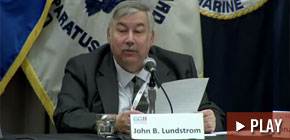
John B. Lundstrom: "The Battle for the Coral Sea"
Author Lundstrom discusses the Battle for the Coral Sea at the 2012 International Conference on WWII.

ARTIFACTS



